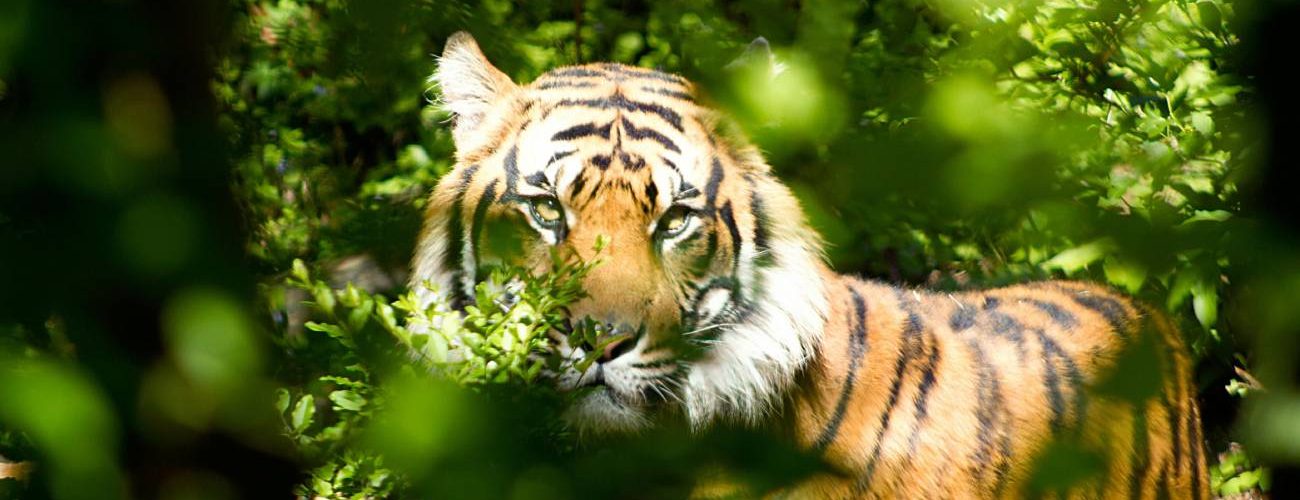The Malayan tiger, a symbol of strength and courage in Malaysia, is on the brink of extinction. Featured on the country’s National Coat of Arms and revered as a symbol of royal majesty, the tiger has also become a key identity icon for various government and corporate agencies. However, the Malayan tiger may soon exist only as a cultural symbol and in the title of Malaysia’s national football team, as the species faces a critical population decline.
A recent survey revealed alarming numbers, raising concerns over the future of the Malayan tiger. With less than 150 tigers left in Peninsular Malaysia, urgent actions are needed to preserve this majestic species.

A Dramatic Decline in Tiger Population
According to the findings from the 1st National Tiger Survey (2016-2020), the Malayan tiger population stands at an alarming 150 individuals, a significant drop from previous estimates of 250–340. This decline marks a catastrophic decrease from an estimated 3,000 tigers in the 1950s. The survey, a collaboration between the Department of Wildlife Protection and National Parks, WWF-Malaysia, and other NGOs, highlights the urgent need for conservation efforts.
Currently classified as “Critically Endangered” on the IUCN Red List, the Malayan tiger faces the threat of extinction. The situation demands immediate intervention to prevent the species from vanishing from the wild.
Poaching and Habitat Loss: The Primary Threats

The Malayan tiger’s sharp population decline is attributed to a variety of factors, with poaching being the most significant. Dr. Mark Rayan Darmaraj, Director of the Malaysian Wildlife Conservation Society, emphasized that illegal hunting and traps, once a sporadic occurrence, have become widespread across Malaysian forests. Poaching activities target not only tigers but also their prey, such as the Sambar deer and wild boars.
“Ten years ago, illegal trapping was relatively isolated, but now thousands of traps have been discovered in our forests,” Dr. Darmaraj explained. He also noted that large-scale poaching by locals and foreign hunters from Indochina poses a major threat to the survival of large mammals, resulting in an ‘empty forest syndrome.’ Without large mammals, Malaysia’s forests may appear lush, but they will be devoid of key wildlife species.
Habitat loss is another major challenge, as wildlife habitats are increasingly being encroached upon by housing developments, roads, farms, and other infrastructure projects. With diminishing spaces for these animals to thrive, tigers are forced to expand their hunting grounds, encroaching into previously untouched territories.
A Perfect Storm: Declining Prey and Disease

A critical factor in the survival of the Malayan tiger is the availability of large prey, such as the Sambar deer. Unfortunately, overhunting of this species, due to the demand for its meat, has led to a sharp decline in deer populations, further threatening the tiger’s food supply. Tigers also rely on wild boar, another prey species, which has been heavily affected by the spread of African Swine Fever (ASF), a viral disease that has decimated pig populations across the region.
The ASF outbreak, first detected in Malaysia in 2021, has severely impacted both domesticated and wild pig populations, leaving tigers with fewer food sources. This reduction in prey has forced tigers to wander into new areas in search of sustenance, often bringing them into conflict with humans.
“Tigers need large prey to survive, and with the population of both Sambar deer and pigs dwindling, the situation is dire,” Dr. Darmaraj warned during a recent session at the PRAXIS 2024 public policy conference.

Conservation Efforts and Future Hopes
In response to this crisis, Malaysia has implemented several key conservation initiatives aimed at preserving the Malayan tiger. The establishment of the first Malayan Tiger National Task Force marks a significant step toward developing a cohesive strategy to protect the species. Supported by key initiatives like Operation Bersepadu Khazanah and the community ranger program, these efforts focus on enhancing enforcement and protection of tiger habitats.
Operation Bersepadu Khazanah, a joint effort between the Royal Malaysian Police and the Department of Wildlife Protection, involves various agencies and NGOs working together to tackle poaching and illegal activities in tiger habitats. The community ranger program, which enlists Orang Asli members, military veterans, and local residents, plays a crucial role in patrolling and safeguarding wildlife areas.

Additionally, the Malaysian government has introduced the Ecological Fiscal Transfer (EFT) mechanism, which provides financial incentives to states for conserving their forests. However, Dr. Darmaraj stressed that the compensation amounts need to be increased for this incentive to be more effective.
The Road Ahead: Multilateral Solutions Needed
While existing conservation measures have shown promise, Dr. Darmaraj emphasized that long-term strategies must be developed to address the root causes of poaching and wildlife trafficking. Understanding the motivations behind these illegal activities could lead to more effective interventions, including providing alternative livelihoods for local communities that depend on hunting.
“To save the Malayan tiger, we must focus not only on curbing poaching but also on restoring prey populations and protecting critical habitats,” he concluded.
Efforts to increase the Sambar deer population through breeding programs and habitat management are essential steps toward ensuring a sustainable food supply for tigers. With coordinated action and continued support from the government, NGOs, and the public, there is still hope for the Malayan tiger to thrive once again in the wild.
The fight to save this national icon is far from over, but with sustained effort and innovation, Malaysia may yet succeed in preserving its proud symbol of strength and courage.











